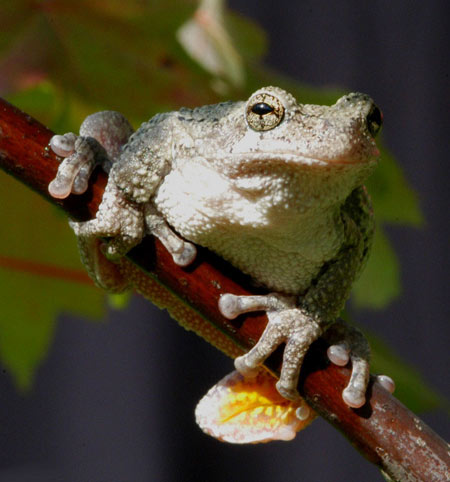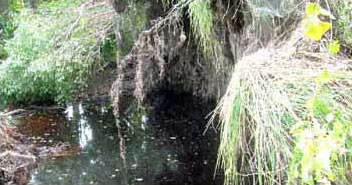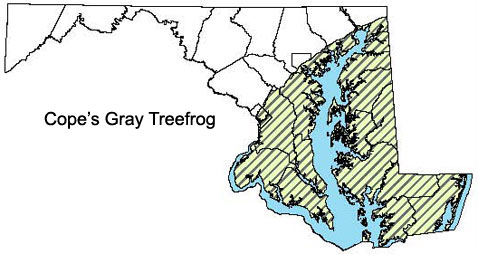Field Guide to Maryland's Frogs and Toads (Order Anura)
Main_Content
Gray Treefrog (Hyla versicolor) | 
Adult Gray Treefrog, photo courtesy of John White
| | Former Name: |
Size:
|
Appearance: |
Habitats:
Photo of Habitat for Gray Tree Frogs
courtesy of Rebecca Chalmers
- Usually observed on tree or shrub trunk or branches that grow in or immediately adjacent to shallow water bodies: permanent, semi-permanent or seasonal wetlands.
- Require a combination of forest and wetland.
|
How to Find:- Listen for their nighttime calls from May through July, a hollow wooden trill, which is slow and more musical in H. versicolor and faster and more harsh sounding in H. chrysoscelis, though calling speed is affected by temperature.
- They may also call during the day.
- Hyla chrysoscelis is the more common species on the Coastal Plain, while H. versicolor is more common in the rest of Maryland.
|
Distribution in Maryland:Gray treefrogs are found throughout much of Maryland.  | | For More Information: |
|
